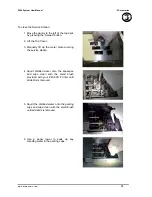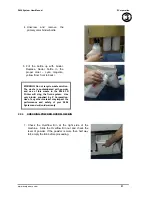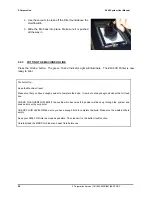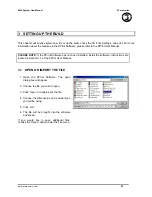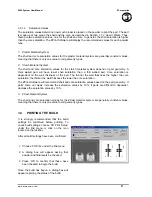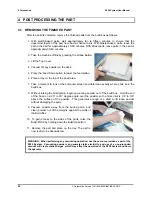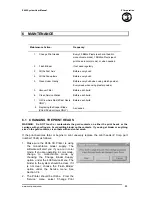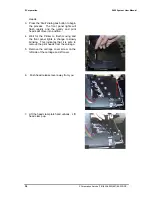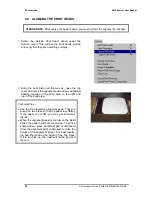
Z Corporation
Z406 System User Manual
26
Z Corporation Service (781)852-5050/(887)88-ZCORP
3.3.1 POWDER
SETTINGS
3.3.1.1
Anisotropic Scaling Values
Anisotropic scaling values scale the model to accommodate any shrinkage or expansion of the part
either due to characteristics of the material system or infiltrant system. A scaling value of one (1) is
equal to 100% of the part in a specific axis. If the part shrinks 1% in a certain axis, the correct
anisotropic scaling value would be 1.01 in that axis. The ZPrint Software will display the
recommended values for each powder type. The scaling factors may differ according to wall
thickness and geometry of the part. A higher accuracy level may be obtained by measuring the part
and adjusting anisotropic scaling values as needed. To obtain new anisotropic scaling factors that
are part specific, print the part with scaling factors of one (1) in all axes. Once the part is completed,
post-process the part. Measure the x-, y-, and z-axes. Divide the nominal value by the measured
value. For example, if the printed part had a nominal value of 1 and had a measured value of 0.98,
the scaling value would be 1.02. After calculating the anisotropic scaling values, input them into the
software and reprint the part and follow the post-processing procedure.
1. Plaster Material System
The plaster material system has been found to remain dimensionally accurate during printing and
thus, the recommended anisotropic scaling values are one (1) in all axes. If the infiltrant system
being used changes the accuracy of the part, please alter the values as needed.
2. Starch Material System
The shrinkage found in the starch material system is proportional to the part geometry and the
drying time of the part. The longer the part is left to dry, the larger the shrinkage value. The part is
most stable in the x and y-axis and shrinks more in the z-axis. Thus, the anisotropic scaling factor of
the z-axis will always be greater than the values for both the x- and y-axes.
3. ZCast Material System
The ZCast material system has been found to remain dimensionally accurate during printing and
thus, the recommended anisotropic scaling values are one (1) in all axes.








